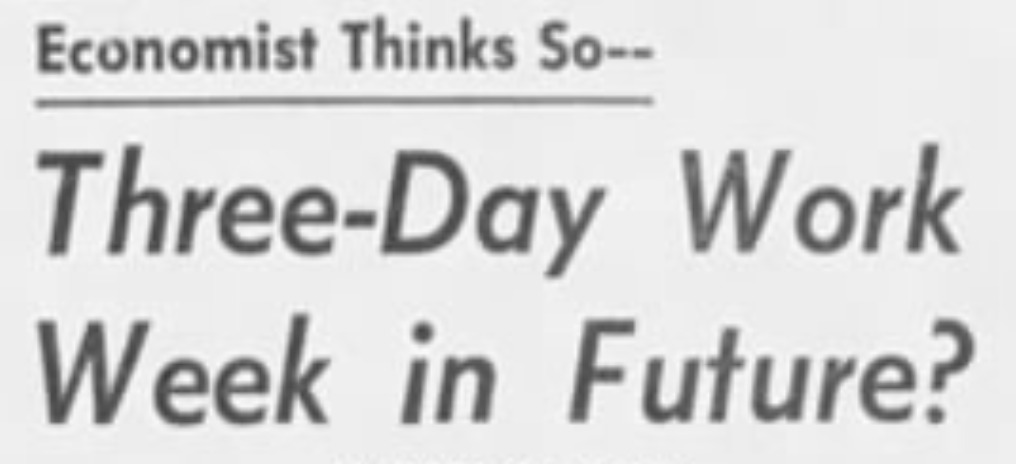- | 9:00 am
The failed promise of a 3-day workweek
Forget flying cars. Why have generations of futurists been so wrong about our current work schedules?

Is there anything AI won’t be able to do?
Jamie Dimon doesn’t think so. In an interview with Bloomberg TV this week, the CEO of JPMorgan made headline-grabbing predictions about the technology and how it will improve our lives, including a very specific estimate of how long workweeks are likely to be in our AI-powered future.
“Your children are going to live to 100 and not have cancer because of technology,” Dimon said. “And literally, they’ll probably be working three-and-a-half days a week.”
Dimon’s comments followed a similar forecast from investor Ray Dalio, who theorized at the Fast Company Innovation Festival last month that AI could usher in an age of three-day workweeks. “In terms of productivity, it could be mind-blowing,” Dalio said.
Lest anyone start prompting ChatGPT for clever ideas about how to spend their four-day weekends, it’s worth pointing out that Dimon and Dalio are just the latest in a long line of business leaders and economists who have predicted the inevitable arrival of three-day workweeks. A cursory search of newspaper archives turned up similar predictions stretching back several decades. Here are a few examples:
1936

Newspapers.com
In a 1936 speech to union workers, labor leader Frank Morrison predicted that improved working conditions would one day lead to 21-hour workweeks and living wages for everyone. As reported by the Associated Press, the secretary of the American Federation of Labor noted how 60-hour workweeks were once commonplace, but that 40 had become the new standard, a comparison that sounds eerily familiar to today’s predictions.
1940

New York Daily News, October 9, 1940 (Newspapers.com)
Mayor Fiorello La Guardia of New York led America’s largest city during the toughest of times, so he might be forgiven for an optimistic speech he once delivered at the newly minted Hunter College building. As reported by the Daily News in 1940, La Guardia predicted that the next generation of educated Americans will have “the full enjoyment of . . . leisure,” including three-day workweeks.
1958
Engineer and military officer Leslie R. Groves might be best remembered for his work on the Manhattan Project, but as an executive at the Sperry Rand Corporation in 1958, he predicted that three-day workweeks would one day become the norm and workers would finally have the leisure time they lacked. As reported by the Evansville Courier, the then-retired lieutenant general cited such driving factors as “automation and technological advances.”
1967
To promote the new CBS television series The 21st Century (hosted by the decidedly 20th-century broadcast legend Walter Cronkite), the show’s sponsor assembled a panel of scientists to speculate about what the world would be like on the far-off future date of January 29, 2001. As reported in 1967 by the Tampa Times, the subject turned to what was by then an “oft-made prediction”: the three-day workweek. The panelists speculated that people with jobs they loved might continue to work four or five days a week regardless, but blue-collar workers in factories would readily embrace the idea. Then the topic naturally turned to space travel.
1970

The Memphis Press-Scimitar, November 20, 1970 (Newspapers.com)
Economist Millard C. “Tex” Faught so believed in the idea of shorter workweeks that he staked much of his career on them, including a book called More Timewealth for You, which critiqued the modern-day rat race and extolled the virtues of leisure time. “That’s why we’ve got more people taking off Mondays or Fridays and creating their own three-day weekends,” Faught said in a 1970 interview with UPI. “They’d rather have the leisure time than the money.”






































